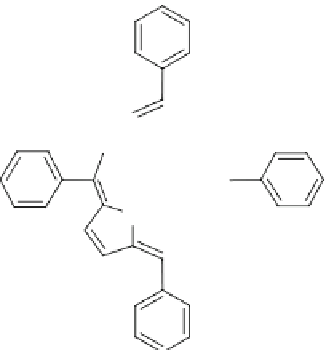Biomedical Engineering Reference
In-Depth Information
Fig. 46
5-(4-carboxyphenyl)-
10,15,20-triphenyl-2,3-dihy-
drochlorin
N
HN
COOH
NH
N
OH
OH
OH
COOH
O
HO
N
HN
NH
NH
N
OH
OH
HO
Fig. 47
Hydrophilic photosensitizer based upon
meso
-tetra(
m
-hydroxyphenyl)chlorin
allows for highly efficient killing of both cell lines. In a more recent study, the same
team used a novel hydrophilic photosensitizer (Fig.
47
) based upon
meso
-tetra(
m
-
hydroxyphenyl)chlorin which allow for the conjugation of at least threefold more
photosensitizer per particle, while maintaining suspension stability. The nanopar-
ticles were almost 60 times more phototoxic on a chlorin-per-chlorin basis and
1,900-fold more toxic on a molecular level compared to classical chlorin e6. The
in vivo
localization to atherosclerotic lesions was examined in apolipoprotein E
deficient (apoE-/-) mice. The agent clearly accumulated within the plaques, particu-
larly in areas rich in macrophages and foam cells. The nanoparticles induced exten-
sive apoptosis upon irradiation at 650 nm and the skin phototoxicity measured was
also substantially reduced compared to conventional photosensitizers. While most
















Search WWH ::

Custom Search